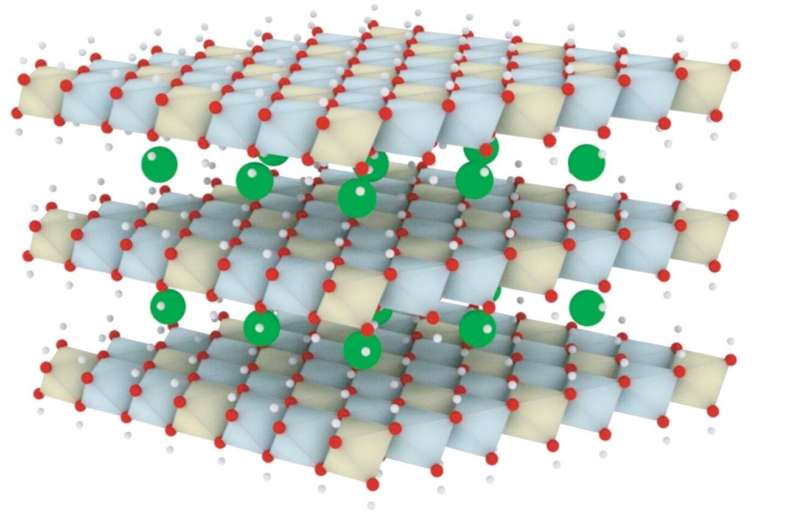Layered double hydroxides for oxygen evolution reactions

To guide the design and synthesis of electrocatalysts toward highly efficient oxygen evolution reactions (OER), researchers from the Beijing University of Chemical Technology have summarized four common strategies to improve the OER performance of layered double hydroxides (LDHs) as well as identifying active sites for LDHs.
They published their work on Sep. 7 in Energy Material Advances.
"With the rising demand and consumption of fossil fuels, energy shortage and environmental pollution are becoming severe and unignorable," said the corresponding author Mingfei Shao, professor with the State Key Laboratory of Chemical Resource Engineering, Beijing University of Chemical Technology, Beijing. "It is necessary to explore sustainable and renewable energy. Hydrogen, especially, is a new energy with splendid application prospects."
Production of highly pure hydrogen can be achieved by electrochemical water splitting using the electricity transformed from renewable energies such as wind and solar. But as one of the half reactions, OER is a four-electron process, with a low-efficiency energy utilization, according to Shao.
Shao and his team focus on LDHs, a large type two-dimensional material. The wide tunability, molar ratios and interlayer anions, make it an outstanding catalysts for OER in alkaline medias.
"We summarized four common strategies applied to improve the OER performance of LDHs. Through these strategies, the overpotential of OER can be decreased, leading to a high efficiency of energy utilization," Shao said. "Some works about the identification of active sites for LDHs are introduced. Revelation of reaction mechanism and active sites provide the theoretical guidance to design efficient electrocatalysts."
The development and exploration of OER catalysts is mostly in the experimental stage at present, which cannot meet the standards for large-scale practical use. For instance, problems related to enlarging the size of the catalysts and maintaining stability during OER remain. Additionally, most reported preparation methods of LDH-based catalysts are complicated and time-consuming, which results in high costs and restricts their application, according to Shao.
"The recognition of reactive oxygen species such as oxygen species adsorbed by active sites on the surface of electrocatalysts and oxygen radical dispersed in the solution during OER still remains ambiguous due to the instable and unapparent existence of reactive oxygen species," Shao said. "After recognizing these reactive oxygen species, how to take advantage of them for more efficient OER is still vital."
"We hope this review can offer ideas to further identify the active sites for LDHs with the purpose of providing guidance to design more advanced electrocatalysts towards electrochemical water splitting," Shao said.
More information: Xin Wan et al, Layered Double Hydroxides for Oxygen Evolution Reaction towards Efficient Hydrogen Generation, Energy Material Advances (2022). DOI: 10.34133/2022/9842610
Provided by Beijing Institute of Technology Press




















